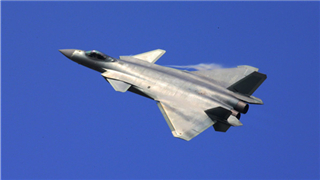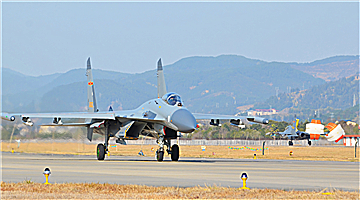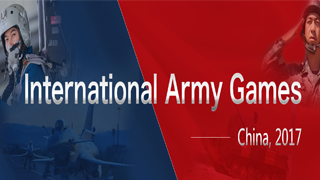

Latest news of China's Su-35 fighter jets' participating in a joint combat patrol mission in the South China Sea and J-20 stealth fighter jets' entering into combat service have sparked heated discussion before the Chinese New Year.
Wang Mingzhi, a professor with the Chinese PLA Air Force Command Academy, interpreted the significance of the two pieces of news.
Reporter: The People's Liberation Army (PLA) Air Force announced on Feb. 7 that China has recently sent Su-35 fighter jets for a joint combat patrol mission in the South China Sea. In what ways can the Su-35 improve the PLA Air Force’s combat capability?
Wang Mingzhi: The Su-35 fighter jet is a typical third-generation enhanced multi-purpose fighter aircraft. It has advantages in long range, combat radius, mobility, situational awareness and information combat capability, and it also has strong air combat and assault capability against ground and maritime targets.
China's Su-35 fighter jet is equipped with advanced mid-range air-to-air missiles and short-range combat missiles and is therefore capable of effectively striking various air targets beyond near-field visual range. The aircraft also has a strong precision strike capability and can launch long-range strikes against ground targets and ships at sea.
The deployment of the Su-35 is expected to improve the air force's adaptive capacity in various complicated situations in the air and on the sea, and enhance China's ability to maintain national sovereignty and security and maritime interests in the South China Sea.
Reporter: What signal does the joint patrol in the South China Sea send?
Wang Mingzhi: The patrol mission involving the Su-35 fighters is an annual training and it also sends three important messages to the outside world:
The first is the PLA Air Force's resolution to implement missions in the new era and firmly maintain national sovereignty and security and maritime interests.
The second is that the PLA Air Force has made new improvements in its capabilities in safeguarding national sovereignty and security and maritime interests. It also shows that the PLA is capable of coping with the complicated situations in the South China Sea.
The third is that the PLA Air Force will further enhance its maritime combat capability, especially under long-distance and high-sea conditions.
Reporter: The PLA Air Force also announced on Feb. 9 that China's latest J-20 stealth fighters have been commissioned into air force combat service. How do you interpret "have been commissioned into combat service?"
Wang Mingzhi: China's J-20 stealth fighter jet made its maiden flight in 2011 and was first shown to the public at the 11th Airshow China in Zhuhai, China's Guangdong Province, in November 2016.
China's J-20 stealth fighter jets went through a series of trials to form the fighting tactics, technologies and procedures for the new generation of stealth fighters after being delivered to the PLA Air Force.
This process laid the foundation for its deployment of stealth fighters to the air force's combat units and also helped form combat effectiveness as soon as possible.
Facts have proved that China has not only developed a stealth fighter jet with advanced technology in a shorter cycle than other world powers, but also transformed cutting-edge technology and equipment into a powerful combat capability more quickly.
The commission of the J-20 indicates that China's air force has taken a solid step forward in implementing the strategic requirements of "integrated capabilities for both offensive and defensive operations in space as well as in air."
Reporter: What is the significance of the J-20 stealth fighter jets' commission to combat units?
Wang Mingzhi: First, it signals that China's air force has greatly increased its ability to deal with new security threats in airspace. It changed the way the PLA fought against stealth aircraft by using non-stealth aircraft and ground air-defense system and significantly enhanced the ability to deal with threats from stealth fighter jets.
Second, it means that the PLA has made steady progress in its main battle aviation equipment system.
China's main battle aviation equipment system, featuring with the fourth-generation aircraft as the backbone, the third-generation aircraft as the main body and information equipment as the support, is gradually taking shape.
Third, it confirms that the PLA Air Force's conventional deterrence and combat capability have been improved significantly.
The J-20 has overwhelming advantages over non-stealth fighter jets and brings a powerful air deterrence and combat capability against those who threaten China's air-space security.












